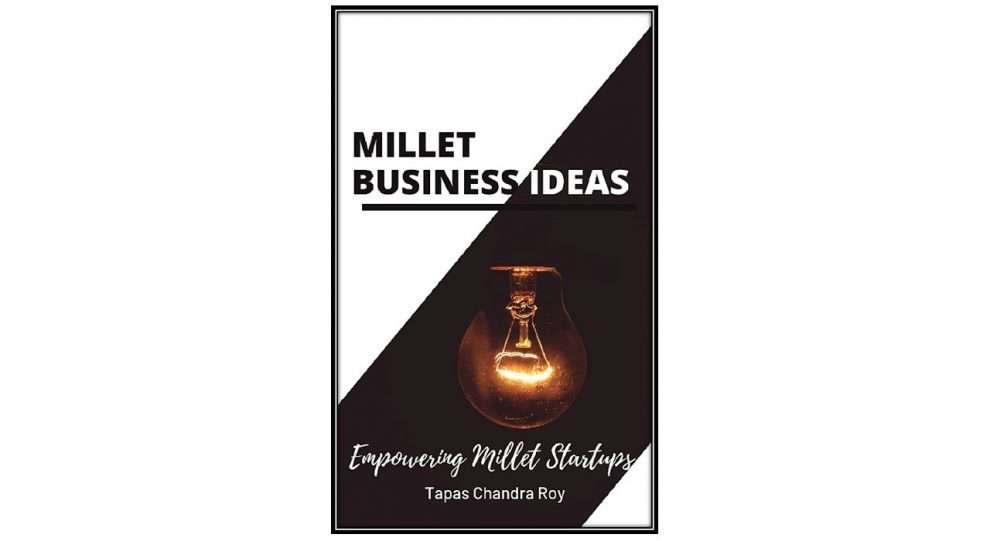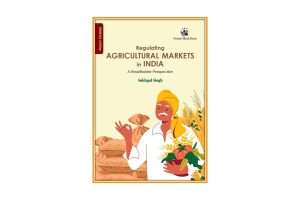Tapas Chandra Roy
Publisher: Self
Pages: 163
Language: English
ISBN: 978-93-5768-205-3
Price: INR 599 (Paperback)
Once known as poor man’s food, millets have now emerged as an important item in the menu of the rich. The demand for millets in the recent past has been growing, mainly due to its ability to combat modern lifestyle diseases. There is also an increasing awareness on the health and nutritional benefits of consuming millets. Though the area grown under millets and its consumption went down over the past 4-5 decades, millets continue to be an important crop for farmers in the drylands of India. With increased availability of irrigation and introduction of high yield varieties of rice and wheat, farmers started replacing millets with these crops. The drudgery involved in processing millets and preparing meals from millets has also contributed to reduction in consumption and demand for millets.
But it must be kept in mind that across centuries millets have been well-connected with the food system and culture of the people of India, as they are staple foods for many small and marginal farmers and tribal communities in the country. Therefore, these millets need to be promoted and the existing varieties need to be preserved.
Millets are not only comparable to major cereals with respect to their nutritional features but are also very good sources of carbohydrates, micronutrients and phytochemicals with nutraceutical properties. In order to revive the demand for millets in India, there is a need to bring all the stakeholders – from production to consumption system value chain – onto a common platform and link dryland farmers with actors along the value chain.
Millet Business Ideas: Empowering Millet Startups by Tapas Chandra Roy encompasses all the aspects of millets beginning with an introduction to the nine millets, their importance, background and trends of millets, together with avenues for developing millet businesses. The introductory section covers types of millets, their nutritional compositions, and major states growing millets. It also looks at millets as One District One Product (ODOP) in various states. Millets are popular because of their health benefits; this booklists the multiple health benefits along with clear explanations. The author also overthrows the myths surrounding millets by providing scientific reasons.
Even though the cases of successful millet entrepreneurs could be a diversion, these cases help the layman to understand the current millet situation. The author has taken utmost care in using simple language to make it more reader friendly. His keen interest is obvious in each section of the book because it covers even the small, yet important, segments of the millet value chain. The author – a promoter of millets in Odisha through the Odisha Millet Mission – has shared his pertinent experiences in such a way as to convince the reader to adopt millets in their daily food habits.
To boost financial investment in the setting up of millets startups, the author has briefly recorded the support extended by various agencies and government schemes for this. Apart from this, the author has also given an insight into central government and state government millet missions, which are working in close partnership with research institutes such as ICAR – Indian Institute of Millets Research, Hyderabad, to undertake region-based research so as to analyze the reason for reduced production and productivity of certain millets, and the strategies to overcome these situations. Having being part of the activities organized in support of the International Year of Millets – 2023, the author has thrown much light on them.
Not only does the author introduce millets to the reader, he also ignites the minds of the reader so that they would go on to embrace the millets business. With this in mind he has given ample options along with procedures for preparing a particular millet recipe. These millet products have scope in millets industry at both national and international markets. Furthermore, the author states persuasively that these products need to be branded, and the tactics to be followed to make their brand popular is also given in detail.

There is a need to create awareness on the importance of millets and to organize skill development trainings on millets for youth and women. To enhance the income of millet growers, a number of farmers can together form a group to establish primary processing units, thereby facilitating the high investment. Arranging millets buyer and seller meets will enable the farmers to have assured markets. After having said everything about millets and their promotion, Tapas has given advice based on his experiences to the entrepreneurs, for example what characteristics the millet products should have so as to succeed in the millet market world.
The author has taken effort to provide sufficient information for aspiring youths and entrepreneurs through ideas along with quoting appropriate success stories of millet entrepreneurs/ agripreneurs/startups. Thus, one can rely on this book for preliminary information. Since all stakeholders, including the national governments, international agencies, researchers, farmers, Farmer Producer Organizations and agribusiness companies involved in the millet sector are preparing to celebrate 2023 as the International Year of Millets they should ideally read this book. The efforts of Tapas Chandra Roy in writing a comprehensive book on Millet Business Ideas is much appreciated.
Sangappa & Manjuprakash Patil

Dr. Sangappa, Scientist (Agricultural Extension) ICAR- Indian Institute of Millets Research, Hyderabad, He can be reached at sangappa@millets.res.in

Dr. Manjuprakash Patil, Senior Research Fellow, ICAR- Indian Institute of Millets Research, Hyderabad, He can be reached at manjunpatil44@gmail.com





Excellent narration about status, importance in nutrition, business prospects of millets. Worth reading. Congratulations
Thank you so much for your nice words & wishes.
The author Tapas Chandra Roy, being a promoter of millets in Odisha must have shared his experiences in promoting millet production and consumption in India through his book “ Millet Business Ideas: Empowering Millet Startups’ . Although several individuals and organizations are involved in promoting millets efforts it is not enough to escalate millet production. As pointed out by him, it is necessary to establish multi stakeholder platforms to promote millet production. It is also equally important to assess the reasons for decrease in millet production and demand in the recent years through a comprehensive study.
The book must have described the success story Dr .Khader Vali, the millet man of India who inspired people like Sri . K V Subba Reddy of Nandyal Distirct of Andhra Pradesh who quit his lucrative (https://www.thebetterindia.com/305815/inspired-by-india-millet-man-accountant-quits-job-to-sell-millet-dishes-startup-earns-crores). The efforts of the Government of India are also appreciable. Recently, our Foreign Minister S Jaishankar hosted a ‘Millet Lunch’ For UNSC Member States in New York He said “As we head into International Year of Millets 2023, a strong message for their greater production, consumption and promotion would help global food security and enhance sustainability in agriculture.”( https://www.ndtv.com/india-news/s-jaishankar-hosts-millet-lunch-for-unsc-member-states-in-new-york-3611314) .
Congratulations to the reviewers of this book Drs Sangappa and Manju Prakash Patil of IIMR, Hyderabad and thanks to AESA for publishing the book review.